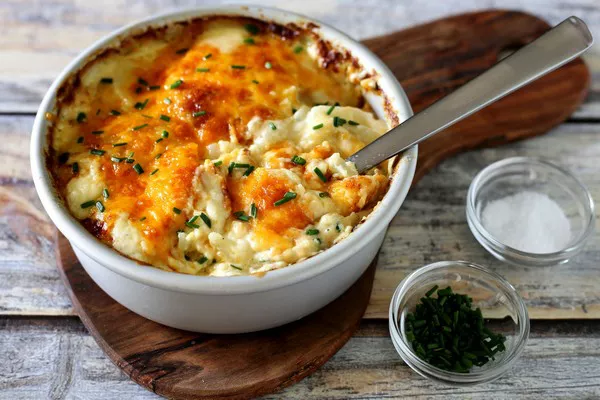The unique and flavorful fusion of Indian and Chinese cuisine, commonly known as Indo-Chinese food, has become a prominent feature on restaurant menus across the United States. This delectable amalgamation of spices and techniques has captured the taste buds of many, raising the question: What makes this comfort food a hit among Indian immigrants and a growing American audience?
Christina O’Neill vividly recalls her introduction to gobi manchurian, a dish featuring crisp, fried cauliflower florets bathed in a tantalizing red chili sauce, during a social gathering in an upscale Californian suburb back in 2017. The medley of subtle spiciness and sweetness left a lasting impression, quickly earning its place as her favorite.
The popularity of dishes like cauliflower manchurian extends beyond private gatherings, finding a ubiquitous presence at various events and upscale restaurants across the United States. This culinary phenomenon is part of the distinct Indo-Chinese cuisine, known for its bold combination of soy sauce, vinegar, garlic, ginger, and a generous dose of chili.
Abhilash, the manager of Inchin’s Bamboo Garden in Georgia, emphasizes that Indo-Chinese cuisine represents a creative integration of Chinese flavors with Indian ingredients. This culinary style, which has been wildly popular in India for decades, is making its mark on the American dining scene, especially in regions with a sizable Indian-American population.
Anupam Bhatia, the owner of Aurum and Broadway Masala in the San Francisco Bay Area, notes that the tasteful fusion pairs exceptionally well with white wine, contributing to its increasing demand among American patrons. Even Pastries, Biryanis & Chaat (PBK) in Tampa, Florida, has incorporated Indo-Chinese cuisine into its menu, responding to the requests of customers, including those from Asia and the Caribbean.
What began as a response to the cravings of Indian immigrants has seamlessly integrated into the American culinary landscape. The cauliflower manchurian, for example, has secured a permanent spot on menus, rivaling the popularity of traditional dishes like butter chicken.
Neha Sharma, manager at the Californian branch of Inchin’s Bamboo Garden, reveals that hakka noodles are the “most ordered” item on their menu, showcasing the global recognition of this unique culinary fusion.
The roots of Indo-Chinese food trace back more than a century to the city of Kolkata (formerly Calcutta) in India. In the 19th century, Chinese migrants, primarily from Cantonese and Hakka communities, brought their culinary traditions to Kolkata. The first Chinese eatery in the city opened in the 1850s, catering initially to the Chinese community. However, by the 1920s, posh establishments like Nanking began offering Chinese cuisine to a broader audience, including high society.
As the Indian palate embraced Chinese flavors, restaurants started incorporating more spices to cater to local tastes. By the 1960s, Chinese cuisine, once considered exotic and expensive, had permeated street-side stalls in the form of chowmein and chops, marking the birth of what we now know as Indo-Chinese.
The dispersion of Chinese immigrants after the 1961 India-China war led to the global spread of Indo-Chinese cuisine. Kuang T Hou, the owner of Calcutta Wok in New Jersey, speaks of the food as synonymous with his childhood, having grown up in a family that ran Indo-Chinese restaurants in Calcutta for 35 years.
Despite its growing popularity, Indo-Chinese preparations remain absent from the majority of Chinese restaurants in the US. Second-generation Chinese-American Jocelyn Chang notes that while her family occasionally ordered momos from their neighborhood Indo-Chinese restaurant, dishes like cauliflower manchurian were unfamiliar.
In contrast, Indo-Chinese offerings have become an indispensable part of Indian restaurant menus in the US. Recognizing the appeal to families seeking diverse options, Indian restaurants have embraced Indo-Chinese cuisine to cater to a broader customer base.
Fifteen-year-old Shaurya Singh, a fan of Indo-Chinese cuisine, looks forward to family drives to his favorite spot in Nashville, Tennessee, highlighting the variety and appeal that this fusion style brings to the table.
Kuang T Hou emphasizes that nearly every Indian restaurant in the US now offers Indo-Chinese items, capitalizing on the undeniable combination of taste and popularity. The journey of Indo-Chinese cuisine from Kolkata’s narrow streets to the diverse American dining landscape is a testament to its rich history and widespread appeal. As this culinary fusion continues to captivate palates, it solidifies its place as a beloved and essential component of the American dining experience.

